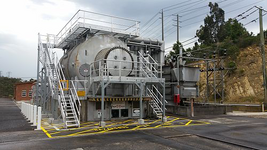From the linked IEEE Article talking about reactive power and Spain's outdated grid rules are a problem.
"So, the fact that more renewable energy is often more distributed than conventional sources may have contributed to a different reactive power profile on the Iberian grid. Yet “other operators, such as in the U.S., require or reward grid participants for helping balance this reactive power,” Lara says. Spain could do that, too, given its
commitment to expanding the role of renewable, and therefore distributed, power. Yet its reactive power rules predate the flood of solar and
wind energy that has reshaped the country’s grid (the main rules are from
2000, with a
2014 partial update).
Today’s rules also exempt renewable plants from helping to lower voltage peaks, Gómez says, which is a mistake: “Today’s grids, with their high renewable penetration, can’t be managed like grids of the 20th century when everything was
fossil fuels and hydroelectric plants.”
And article even mentions increasing grid storage capacity as expected.
"The recommendations include updating the 25-year-old
Operational Procedure 7.4, a draft of which has been in the hands of the national competition regulator for the past five years, and which would enable better voltage control. The council also recommended improving the electrical grid’s
demand response, storage capacity, technical regulations, and interconnections with neighboring countries. —
IEEE Spectrum"
The article also gets into the reactive power issues with distributed solar power generation that is only grid-following, not grid-forming.
Thus confirms the way politics and governance runs things, going against sound system engineering analysis, design, and implementation, and nothing the sound engineering did not already know...
Could reactive power be the missing link in understanding the Iberian blackout?

spectrum.ieee.org





